5. Duck, You Sucker (1971)
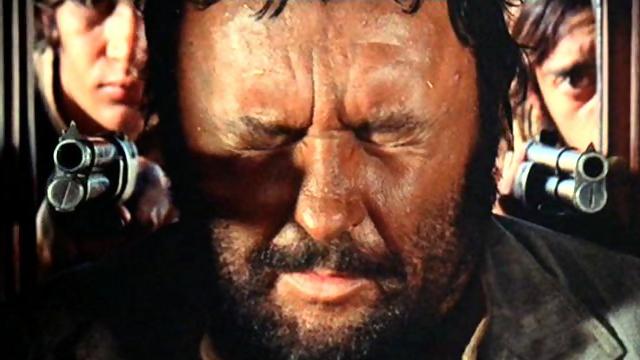
Truly the runt of the litter when it comes to Leone’s big movies due to several outside elements marring proceedings, the end result flopped with critics and box office alike and still has yet to earn its credits retrospectively, unlike the rest of his filmography.
Leone initially wanted to just produce the film based on a concept he co-wrote – a less ambitious genre film with a devious political agenda. Yet due to some nasty studio wrangling, he was forced to replace the director (his former assistant director Giancarlo Santi) during the start of filming. It was the first time Leone had to rework a film to his tastes on the fly and it resulted in hiccups to the usually elaborate pacing and tone of the end product.
Also, its two leads had plenty going against them, based off the then tired archetypes of the Eastwood and Wallach characters from “The Good, the Bad, and the Ugly” except transposing them into the Mexican revolution; Rod Steiger plays a Mexican bandit, and James Coburn an ex-IRA Dubliner, whose paths tangle and turn them into revolutionary heroes.
The former actor is a harsh example of Hollywood ‘whitewashing’, yet Steiger, despite a hammy Latin accent and light brown face paint, turns in a fierce and heartfelt performance that at times rivals Wallach’s identical role and character arc. Coburn, on the other hand, has a easier time despite an occasional wonky brogue; the man’s twinkle-eyed charm and laid-back cool gives his stoic badass a unique flavour only he could deliver, and the pairing between the two has electric chemistry that enjoyably sparks.
Overall, despite some shortcomings thrown against it and some random baffling weirdness, Leone’s treatise against the vicious cycle of revolution is quite heartfelt, and even powerful in some key moments. As expected, it’s also littered with stellar set pieces and striking visuals, with the director at an all-time creative peak showing that even a production he entered half-assed can’t deny his perfectionist touch (the elaborately disorientating opening a prime example).
Still, the film feels much messier than his other efforts, and several of his trademark tropes were repeated too often. Conclusively, though, the film deserves much more love then it gets – if this is considered Leone’s misstep, most directors could only dream at failing with a product half as compelling and confident.
4. For a Few Dollars More (1965)
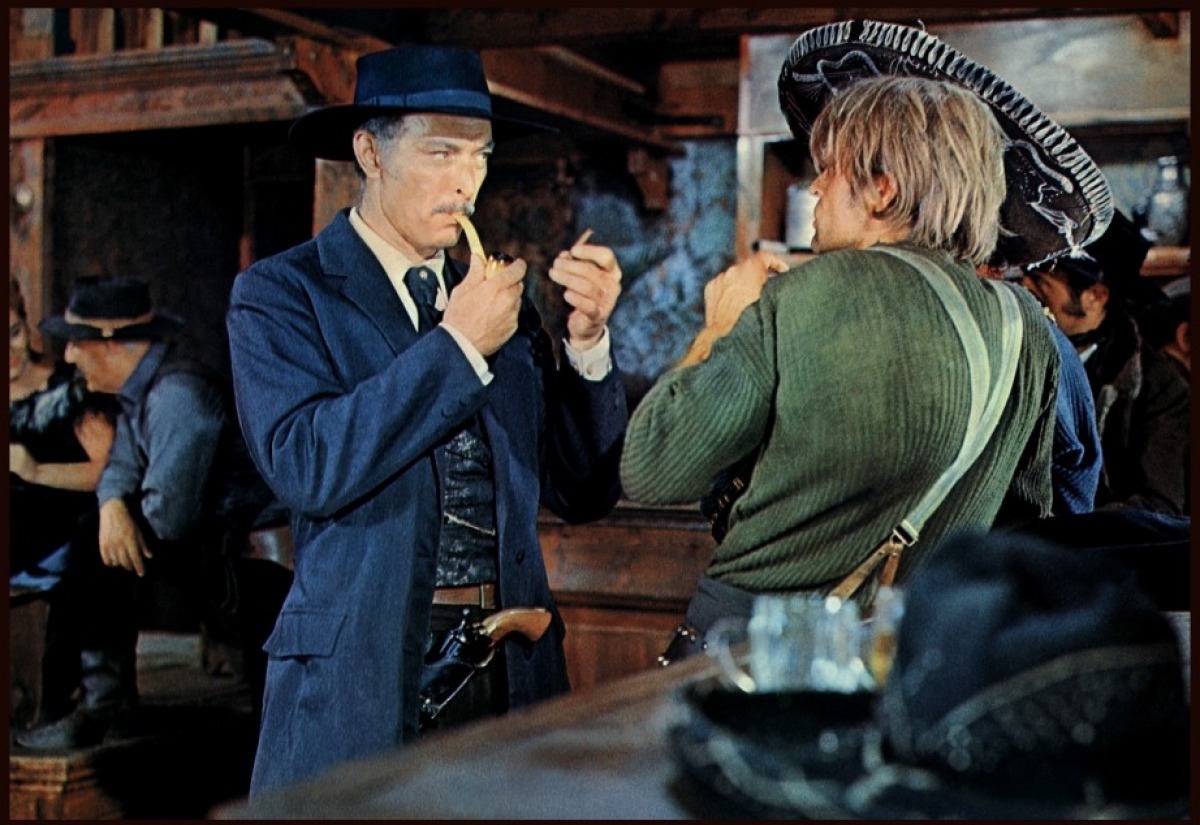
“Few Dollars” was a direct follow-up to the surprise success of “Fistful” and like most good sequels, it delivered and improved on everything that was great about the original whilst adding something extra. Eastwood manages to be slightly cooler this round as the poncho-wearing bounty hunter (a feat some would assume not possible), Gian Maria Volonte’s villain role was expanded into a more demented and meatier package, and the budget and style grew more ambitious and confident.
Yet, not to be forgotten, the impact of Morricone’s score was not lost on the filmmakers; his haunting central melody even becomes a pivotal plot revelation in the finale that could’ve stood as one of Leone’s most iconic cinematic moments, if he didn’t go and outdo it in a later film featuring an infamous harmonica.
With all those great elements strengthened, it needed a new angle to avoid repetition, and it was found in a washed-up Hollywood C-actor – the falcon-faced man’s man Lee Van Cleef, who had coasted in bit parts as thugs or criminals in 50’s genre cinema (most memorably in “High Noon”). Yet the strikingly charismatic actor never got his due and became broke due to a lack of demand in the 60s, until Leone came calling and he was justly reinvented as a icon of European exploitation efforts.
Ultimately, Cleef is every bit as macho as Eastwood and it makes for a fantastic double bill of alpha bounty hunters, ultimately working under the ‘buddy cop’ formula as the youngster and the old guard are grudgingly forced to work together, yet build a mutual respect. Cleef commands the screen (no easy feat next to Eastwood), and his stoic nature is all business, yet it hides a warmth and sadness beneath his steely glare, the reasons of which are revealed over the course of the story in the powerful finale.
The film has some flaws; the second act slogs in the midst of the scorching bookends, and it’s also the least impactful from the “Dollars” trilogy, lacking the surprise factor of the first entry and the epic scale of the third. Yet it’s an incredibly strong piece of work regardless, and the last time Leone would work on a limited scope with priorities simply set on making a cracking genre effort.
3. Once Upon a Time in America (1984)
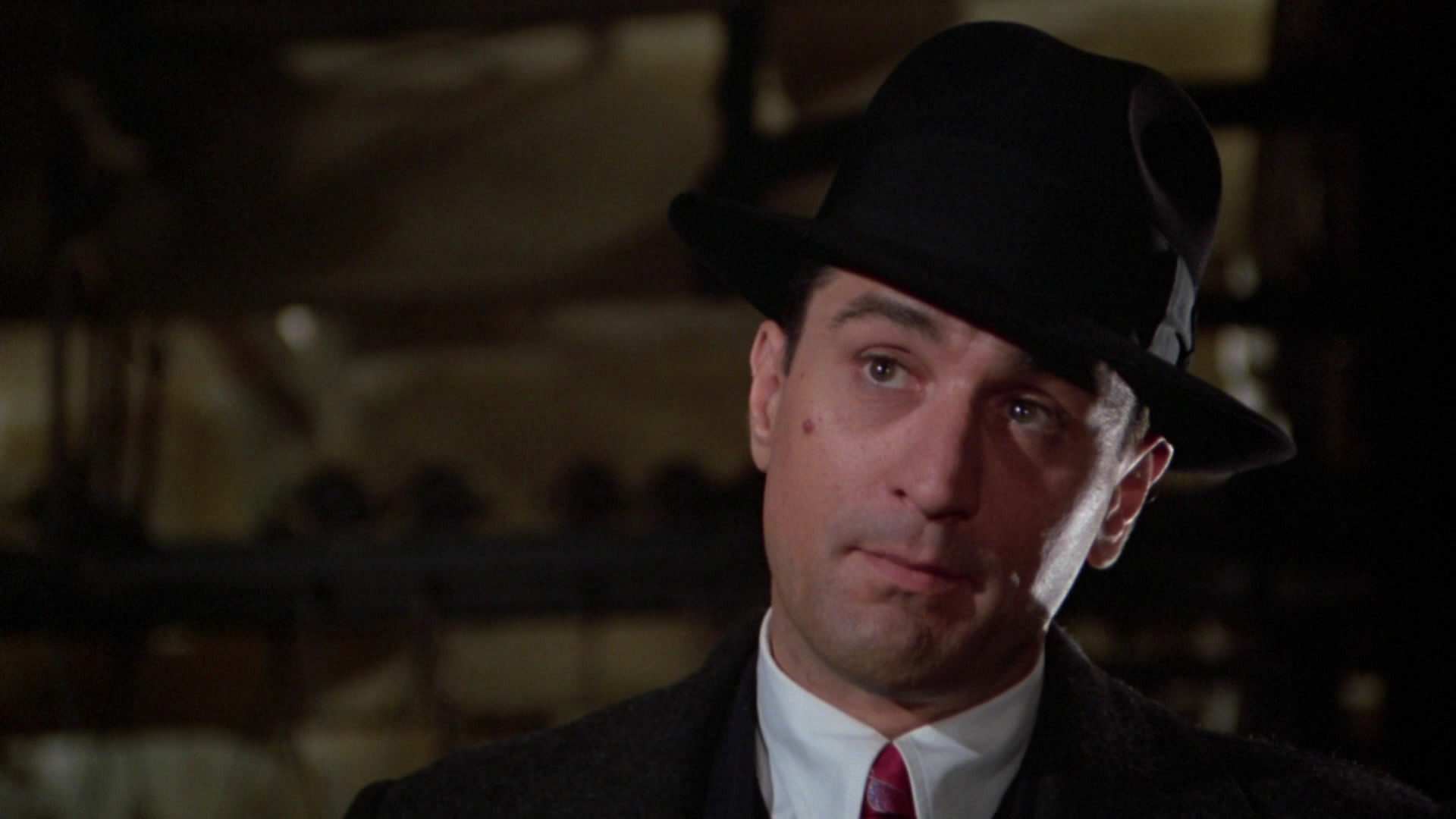
Leone’s final film is a polarising one, a decade-spanning epic focusing on Jewish gangsters from their youths in the 1920s until their last days in the late 1960s. A pet project for the Italian director since the early 60s, financing finally fell into place two decades later, with a incredible budget and stellar cast (Robert De Niro and James Woods, amongst others), yet his nearly four hour epic was truncated on release and shunned out of cinemas.
It was only years later that a longer cut emerged (the closest thing we’ll get to the director’s final vision), and a rich yet demanding film earned respect from the critics, although not unanimous praise.
Those expecting Leone to reinvent the gangster genre with the same joyful giddiness as he approached the western are in for a surprise. he director divorced himself from Coppola’s relatable family drama and Scorsese street-level morality by portraying his hoods as vile criminals, as unlovable to the audience as they are to themselves. The film is filled with shocking violence and more surprisingly for Leone, a large amount of tough sexuality.
A peak De Niro tackled the main part of ‘Noodles’ yet with the lengthy running time, one fights to sympathise with him as he kills, betrays and rapes through three decades. He’s left a shadow of a man at the end, one looking for redemption – you’ll be fascinated by his journey yet hard pressed to root for him. The production value and historical detail is without a question jaw-dropping; Leone’s eye for authentic detail and lush visuals are out of this world in what can be considered his most handsome film.
Overall it’s a dense, rich piece of cinema, yet one that can be equally frustrating and taxing (what’s the deal with James Woods and that garbage truck?), but still, its experimental nuances and tough character choices hinted at Leone entering a new and fascinating period for the filmmaker. Sadly we will never know where he was to go to next, but at least there’s a wealth of fascinating material to delve in with his final piece.
2. The Good, the Bad and the Ugly (1966)
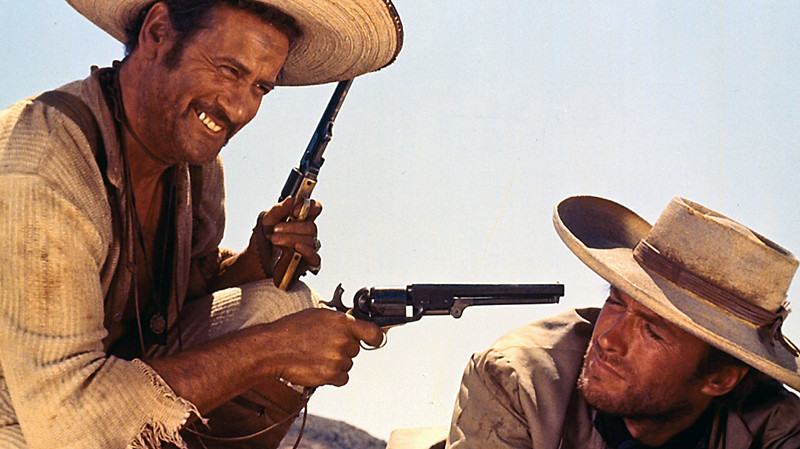
No doubt the film Leone will always be best remembered for as it closed out the “Dollars” trilogy, yet it didn’t so much wrap it up as evaporate it in a fierce display of spectacle. If “For a Few Dollars More” was a big step up over its originator, the third film was a propelled leap into the stratosphere as Leone was finally armed with a budget to match his ambitions.
It took the low-key squabbling of Leone’s scuzzy gunslingers and dropped them into the middle of the Civil War, a rough period where humanity nary reared its head and brother turned against brother. Ironic then that Eastwood’s no-name mercenary and Eli Wallach’s scumbag bandit manage to build a bond as compatriots and even decent human beings (well, at least temporarily).
Eastwood and Lee Van Cleef provide their trademark badass personas that fit a Leone western like a glove, yet the film is entirely Wallach’s show; at first played as a nefarious comedy punchline, the character of Tuco grows to be the most complex, layered character amongst the vast plotline. The audience’s opinion will constantly sway on the bandito in a fascinatingly juicy performance from Wallach that is equally parts lovable and despicable.
Yet, the actors are only a sum in Leone’s sprawling and endlessly watchable piece of work. Displaying an ease for epic scale and battle scenes with his boisterous budget, the Italian director never forgets what really matters – the heart of the film. Regardless of all the big moments, the ones that stay with you are the small ones – Eastwood sharing his cigarette with a dying soldier, Tuco’s confrontation with his brother, they all help build a picture that is heartfelt as well as humorous and exciting.
Leone had enjoyed a stunning success with this movie that still echoes today. It is the definitive ‘Spaghetti Western’ and the best-known Eastwood role, yet all of these factors would be forgotten if they didn’t belong to such a carefully made, rip-roaring adventure that hasn’t dated one bit to this day.
1. Once Upon a Time in the West (1968)
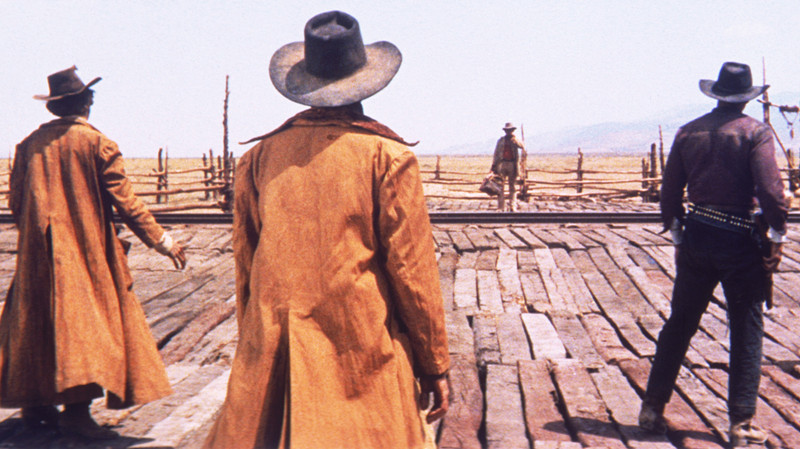
Leone was a filmmaker that felt like he was barrelling forward with every film he made in the western genre; certainly that meant archetypes and thematics were repeated, but more truthfully they were expanded, improved and finessed. That momentum from when he blasted off in 1964 culminated in this glorious spectacle – his no-contest masterpiece.
The film is centred around the birth of the railway system throughout the Old West, which essentially spelt the death of that era. The film is shrouded in an air of melancholy that haunts it throughout, accented by Charles Bronson’s near-silent harmonica-playing gunslinger – a beyond grim take on Eastwood’s no-name hero. Yet, gone is the humour and charm, replaced by the deadpan menace of an avenging angel perfectly pitched inside the macho actor’s granite grimace.
The rest of the cast are beyond stellar as well – Jason Robards’ charismatic bandit is the lovable scene stealer, and the stunning Claudia Cardinale’s is the troubled heroine that works as the compelling heart of the story (the first and only instance of a major female part in a Leone movie). Yet one would be amiss to not mention Leone’s pivotal motivation to make the film in the first place – Henry Fonda.
Fonda, the noble lead in a handful of iconic John Ford movies, was Leone’s all-time favourite actor, and the Italian had persistently pursued working with him from the outset, yet only at this stage did he hold enough pedigree for Fonda to answer his calls.
Fonda’s casting drastically disassembled any role that had come before as he took on his first villain role – the chilling gun-for-hire Frank, with ice cold eyes that don’t even bat when he massacres a whole family in the shocking opening. It was a part that forever changed the actor’s legacy and without a doubt made for his most memorable turn.
Yet amidst all the bittersweet is a glorious celebration of the western genre, a love letter to the cowboy movies of yesteryear whilst passionately updating it. Leone’s perfectionist streak has never been as flawless from the breathtaking opening as three gunmen wait it out at a train station, to the final operatic showdown with Morricone’s booming score never more iconic.
Strangely enough, at the time the film was dismissed as a less superior retread of Leone’s “Dollars” trilogy, yet justifiably it has been reassessed as the definitive Leone film, and no one need bother make an argument otherwise.